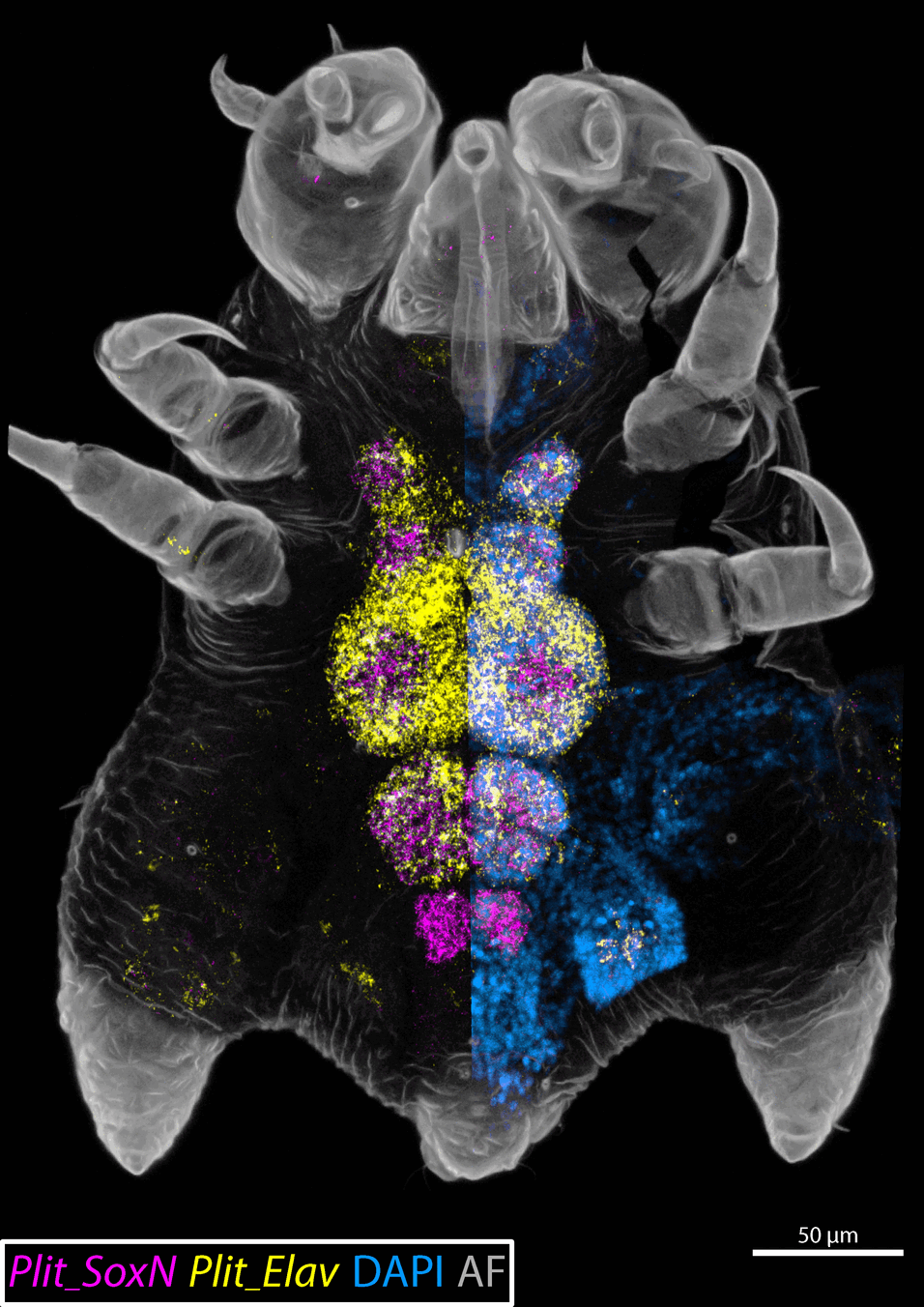Advisor: Georg Brenneis
Master's Defensio
Thursday, June 10th, 2025, 13:00 CET
SR 5.1, UBB
Djerassiplatz 1, 1030 Vienna
Abstract
Sea spiders (Pycnogonida) are a fascinating, yet understudied group of marine chelicerates that form the sister group of all remaining extant taxa (Euchelicerata). Notably, nervous system development in pycnogonids has been reported to rely on large neural stem cells (NSCs) with high mitotic activity and a morphologically asymmetric mode of division. The latter results in their self-renewal and the formation of a second, intermediate neural progenitor cell (INP), which in turn divides symmetrically. This mode of neurogenesis differs significantly from that found in euchelicerates and myriapods, while showing several similarities with neuroblasts and ganglion mother cells, the well-characterized neurogenic cell types driving neurogenesis in Pancrustacea (Crustacea + Hexapoda). Until now, however, the gene regulatory networks governing sea spider neurogenesis and neural differentiation have not been studied, impeding validation of the morphology-based distinction of pycnogonid cell types and further comparisons with pancrustacean neuroblasts and ganglion mother cells on the molecular level. In order to redress this knowledge gap, this study employed HCR-FISH to study the expression patterns of a suite of key genes with conserved roles in neural cell specification, maintenance and differentiation during the development of the sea spider Pycnogonum litorale. The results of this yielded first insight into the transcriptional profiles of the cell types involved in sea spider neurogenesis, revealing a general congruence between previous morphological cell type classifications and gene expression characteristics. Beyond this, it is shown that the first neural precursor cells are specified in segmentally stereotypic positions in the neuroectoderm, similar to those of pancrustaceans. This work contributes to the understanding of neurogenic cell types in sea spiders and allows several parallels to be drawn to the neurogenic processes of pancrustaceans, revealing potential insights into the ancestral state of neurogenesis in arthropods altogether.


